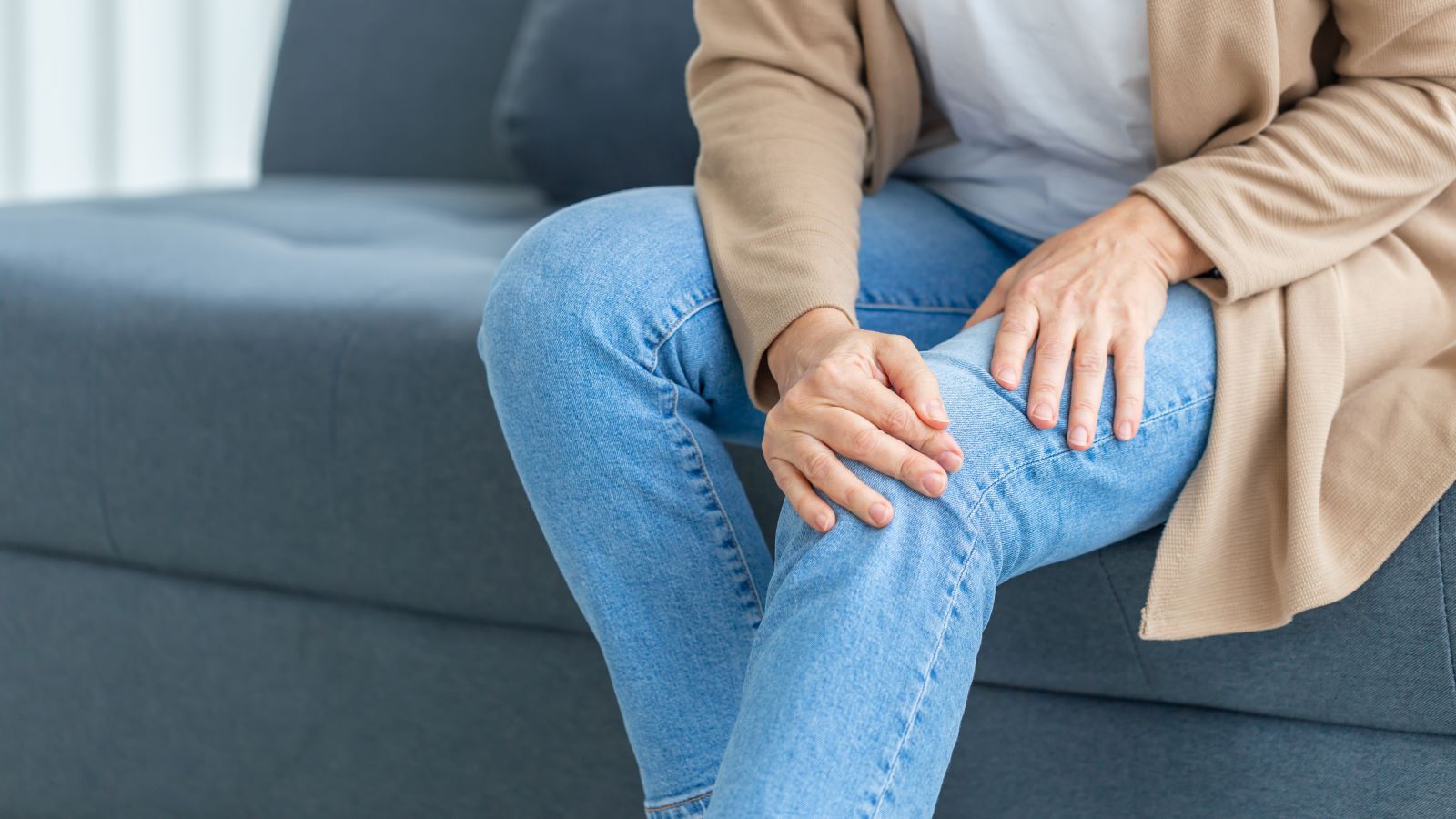<< Back
3 Steps to Reduce Knee Pain at Home

October 05, 2023
If your knees are feeling the strain of everyday life, you’re not alone. Whether you’re a runner or tennis player, or spend your days chasing the kids around, knee pain is a common complaint – especially as we get older.
But is there a way to fix that knee pain, or are you destined for physical therapy and joint replacement surgery?
You may be in luck, says Amy Wasterlain, MD, an orthopedic surgeon at the Connecticut Orthopaedic Institute at MidState Medical Center.
“There are home remedies that will help most people experiencing knee pain,” says Amy Wasterlain, MD, an orthopedic surgeon at the Connecticut Orthopaedic Institute at MidState Medical Center. “While there are some exceptions, knee pain will most likely improve if you follow a few simple steps.”
The best treatment is prevention.
Our knees do a lot for us and absorb the impact of our daily physical activity.
But by taking a few proactive steps, we can minimize the wear and tear on our knees:
- Pick the right shoes: Skip the flip-flops and flat footwear that put extra stress on your joints. Instead, wear supportive sneakers that reduce joint pressure.
- Reconsider high-impact activities: While you may love running, jumping or CrossFit workouts, these movements can lead to injury or chronic pain.
- Embrace low-impact workouts: Your knees welcome activities that aren’t too rough on them, like swimming, biking and the elliptical machine.
- Keep a healthy body weight: Carrying extra weight adds pressure on your knees. Maintaining a healthy weight will reduce wear-and-tear and keep your knees pain free longer.
> Related: 5 Lifestyle Changes to Make Before Your Hip or Knee Replacement
Reduce your knee pain in 3 steps (without leaving your living room).
If your knee just had a traumatic injury, your next stop is the doctor.
But if you’re dealing with nagging knee pain like many of us, you can manage it at home. Here’s how:
1. RICE
If you have an acute injury, like if you’re playing volleyball and you feel a pop with immediate swelling, Dr. Wasterlain recommends RICE to reduce inflammation:
- Rest: Give your knee(s) a break to start the healing process.
- Ice: Apply an ice pack 30 minutes on and 30 minutes off at least three times a day. Don’t put the ice directly on your skin. Instead, grab a paper towel or cloth to prevent freezer burn.
- Compression: An ACE wrap or supportive brace can help reduce swelling and stabilize the knee.
- Elevation: Put your foot above your heart to let gravity help reduce the swelling.
2. Over-the-counter medication
If you have joint pain, NSAIDs (nonsteroidal anti-inflammatory drugs) are typically the most effective for discomfort and swelling. NSAIDs include aspirin, ibuprofen and naproxen. However, some people can’t take these medications if they are on blood thinners or have other restrictions like stomach ulcers or kidney problems.
Dr. Wasterlain suggests two medication alternatives to help with knee pain:
- Voltaren Arthritis Pain Gel (diclofenac): This topical nonsteroidal anti-inflammatory (NSAID) gel may help provide relief to the affected area, even if you can’t take NSAIDs by mouth.
- Acetaminophen: While this medication doesn’t have anti-inflammatory properties, it can help with the pain, especially at higher doses. Except for people with liver disease, most people can tolerate it.
As with all medications, check with your doctor first – especially if you have questions or concerns.
3. Home exercises
Gentle stretching and strengthening exercises can help stabilize your knee and reduce pain. This routine is great to do at home and only takes about 20 minutes a day.
If you need help building your program, Dr. Wasterlain recommends OrthoInfo from the American Academy of Orthopaedic Surgeons. This resource can give you specific exercises that can help improve your knee pain.
If your knee isn’t getting better, call your doctor.
There is one caveat to treating your knee pain at home, says Dr. Wasterlain.
“If your knees start to have painful clicking, feel unstable, or just aren’t improving with these home remedies after a couple of weeks, get evaluated,” she says.
In this appointment, your doctor will examine you and may order imaging tests such as X-rays. From there, your doctor will discuss various options (i.e., physical therapy, prescription strength medication, cortisone shots, or surgery) to get you back on your feet.